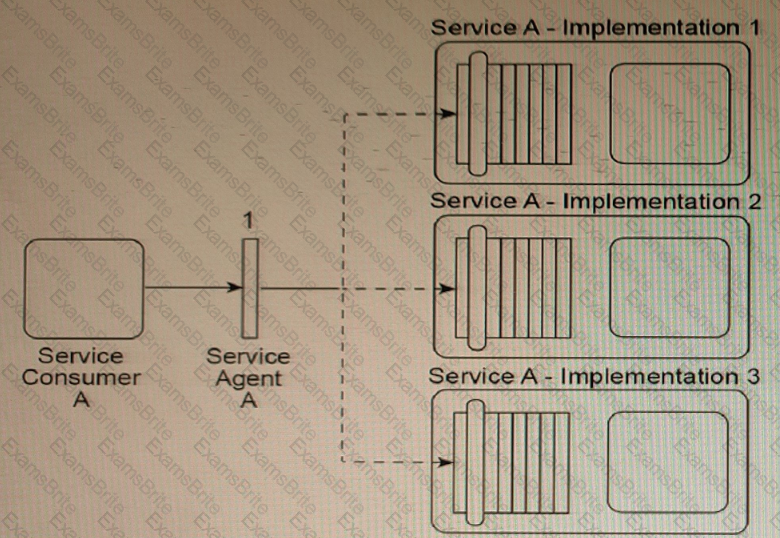
SOA Design & Architecture Lab with Services & Microservices
Last Update Jan 14, 2026
Total Questions : 17
We are offering FREE S90.08B SOA exam questions. All you do is to just go and sign up. Give your details, prepare S90.08B free exam questions and then go for complete pool of SOA Design & Architecture Lab with Services & Microservices test questions that will help you more.




Service Consumer A sends a message to Service A. There are currently three duplicate implementations of Service A (Implementation 1, Implementation 2 and Implementation 3). The message sent by Service Consumer A is intercepted by Service Agent A (1), which determines at runtime which implementation of Service A to forward the message to. All three implementations of Service A reside on the same physical server.
You are told that despite the fact that duplicate implementations of Service A exist, performance is still poor at times. You are also informed that a new service capability will soon need to be added to Service A to introduce functionality that will require access to a shared database being used by many other clients and applications in the IT enterprise. This is expected to add further performance demands on Service A.
How can this service architecture be changed to improve performance in preparation for the addition of the new service capability?